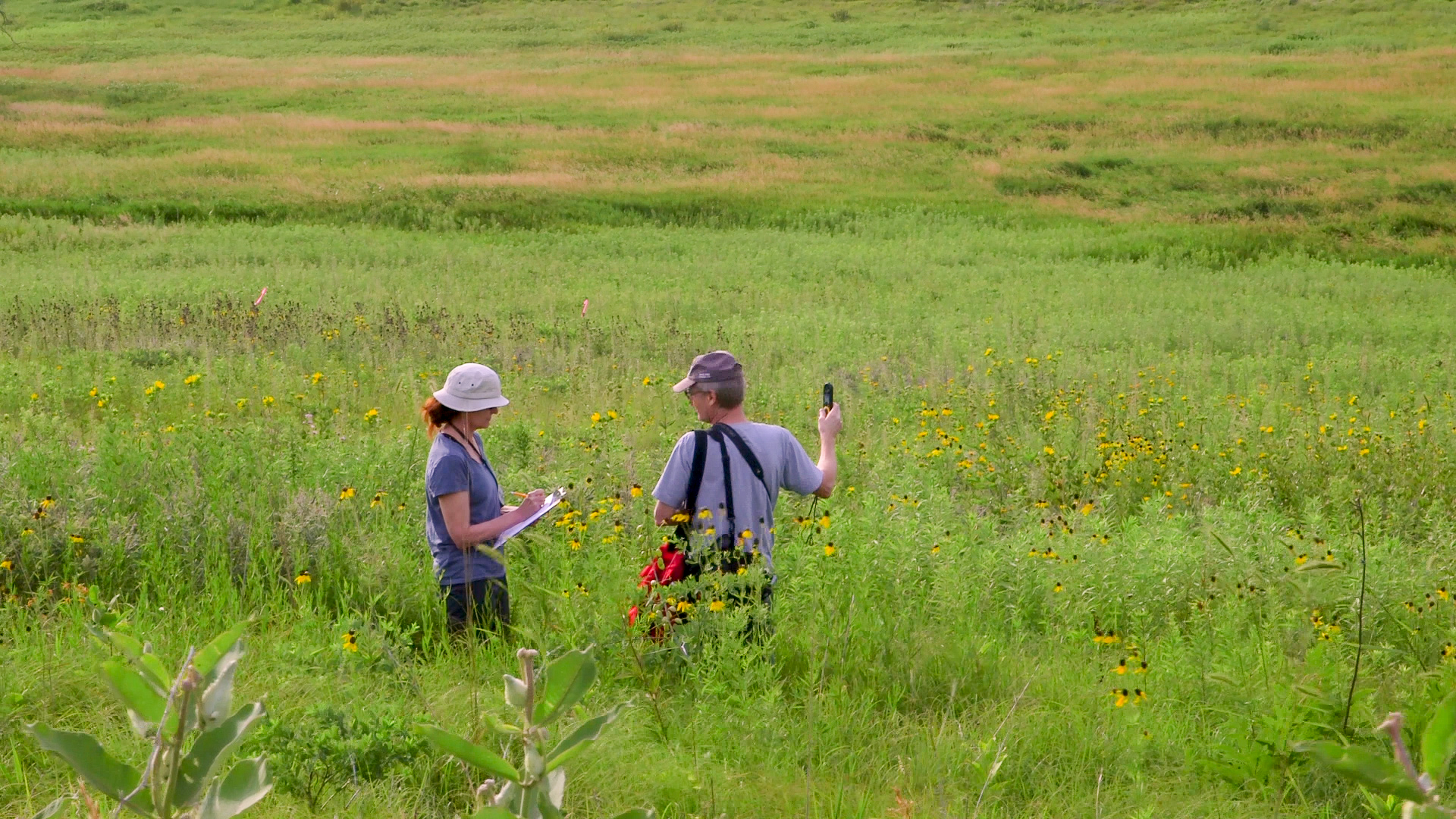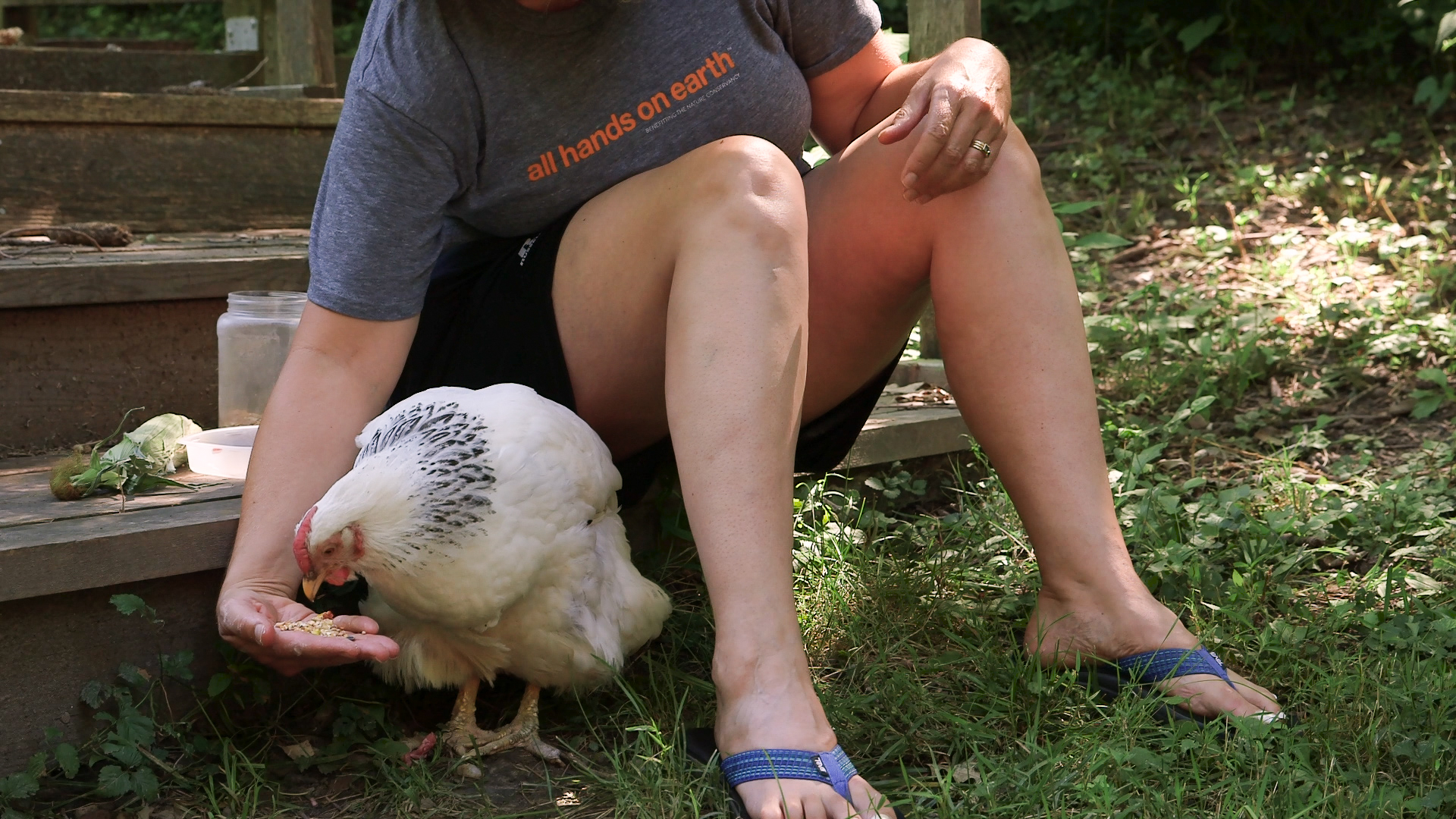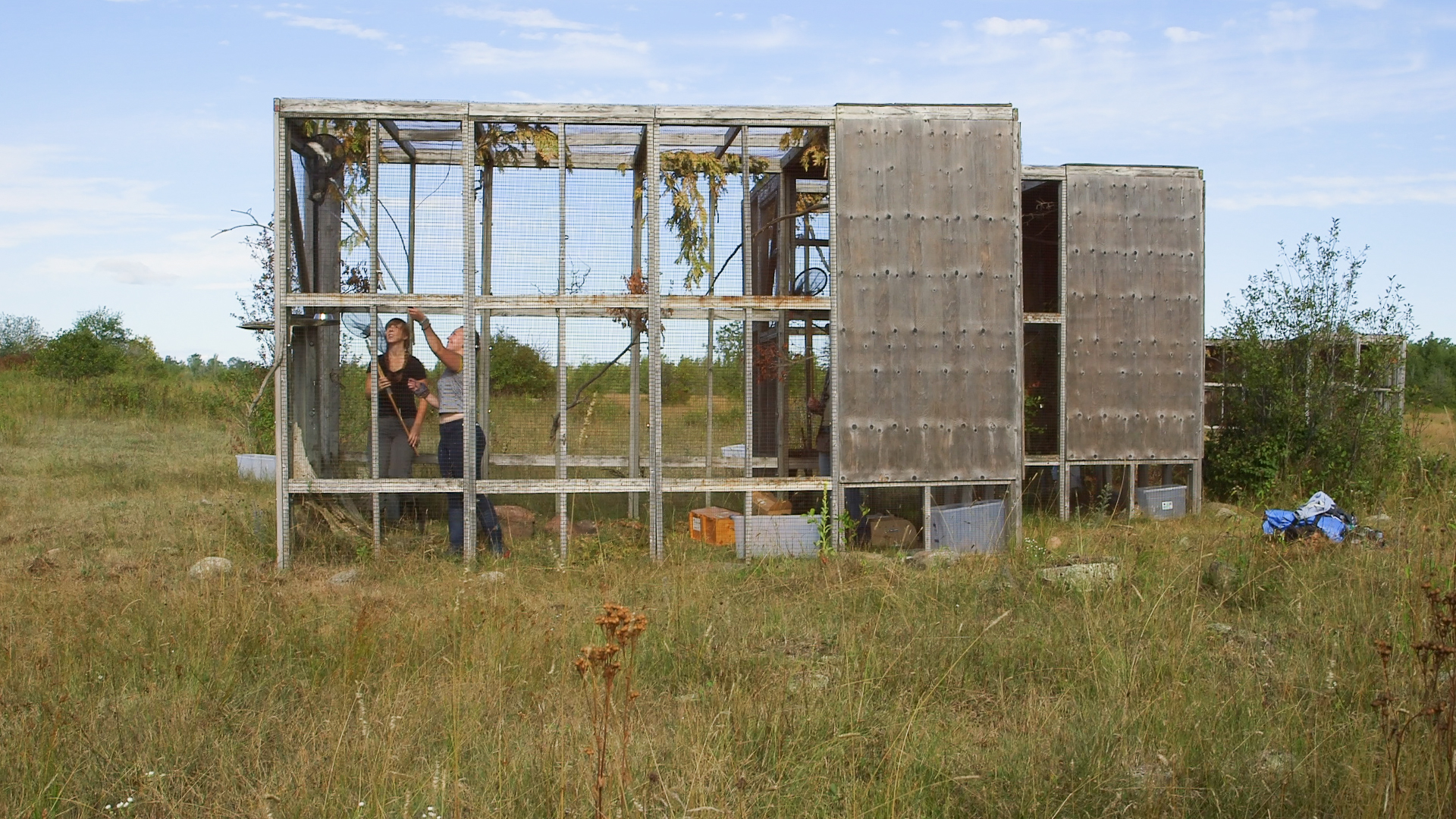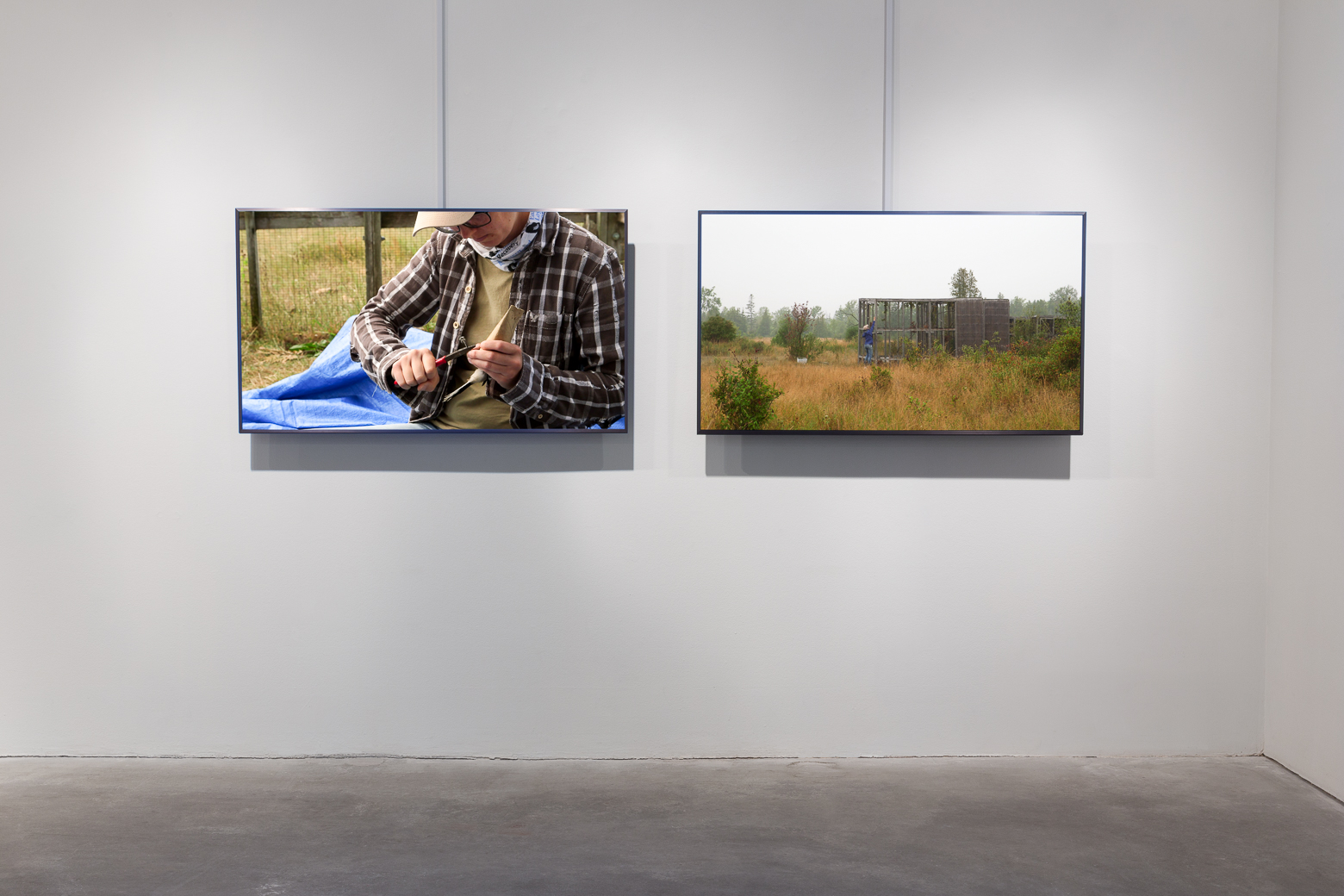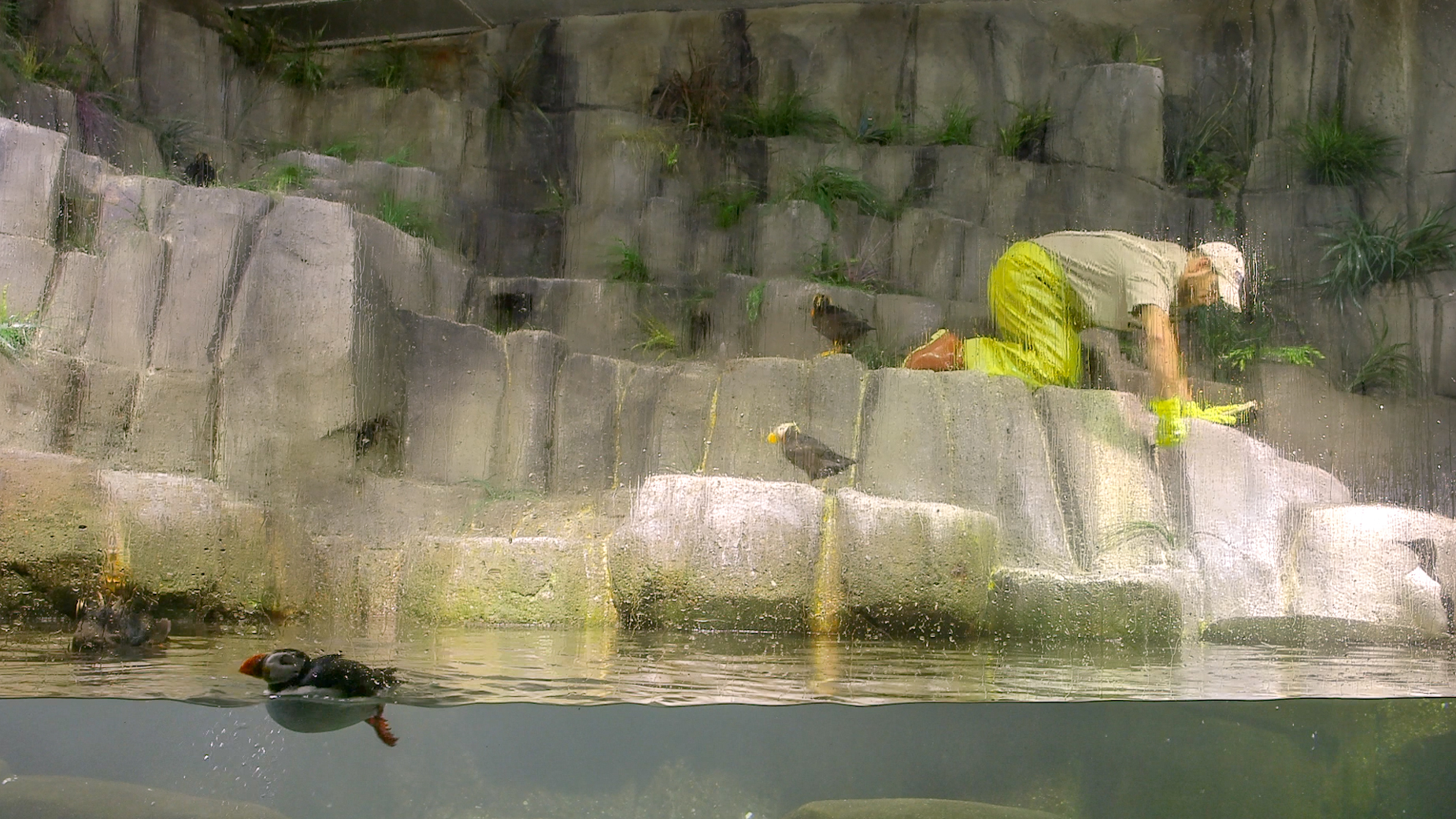The Violence of Care (2019-ongoing)
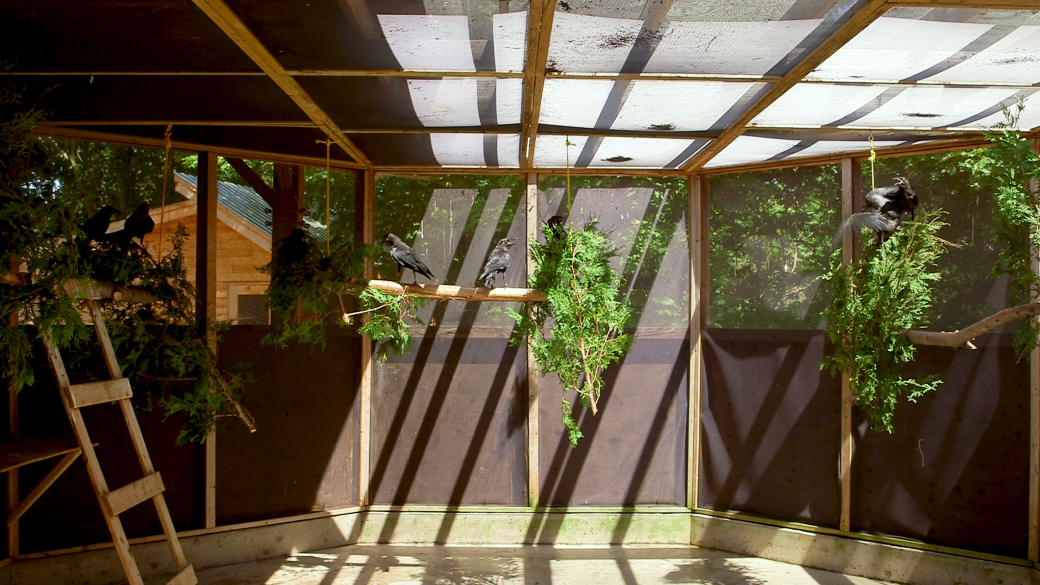
Connecting the zoo, the field station, the conservation center, and the backyard, the video series The Violence of Care presents human practices that try to create the conditions for avian lives to thrive, or, at times, simply to be sustained.
Approaching interspecies care as an embodied and practical form of labour, the videos engage with specific situations, each fraught with ethical concerns. Here care is explored across a spectrum of visibilities and a range of temporalities - pre-emptive, reparative, palliative, prospective, and anticipatory. Care’s methods hover between vision or touch, ranging from intimate contact to the extrapolative remoteness of inference. It is measured, imagined, at times quixotic, but never idealized.
Because “caring or being cared for is not necessarily rewarding and comforting,” as suggests Maria Puig de la Bellacasa, the politics of interspecies care always have to be carefully considered.
The Violence of Care, 2019-ongoing, series of 7 HD videos. Installation view, Bemis Center for Contemporary Arts, Omaha, Nebraska.
Counting Birds for Five-minutes (6:09)
Two biologists perform a five-minute bird count: one focuses on identifying bird species and tracking their relative position as the other scientist registers the information on a field data sheet. The five-minute bird count is widely used to monitor bird populations or progress in ecological restoration projects. As opposed to counting the actual number of birds, this method enables researchers to infer their population from multiple samples.
The two biologists in the video are John McCarty and LaReesa Wolfenbarger, founders of the Laboratory of Avian Ecology at the University of Nebraska Omaha. The video was filmed at Glacier Creek Prairie Reserve, Omaha, Nebraska, USA.
Rehabilitating Juvenile Crows (2:55)
Eight young American crows fly in a temporary home where they’ll reside until they are mature enough to be released. Different circumstances brought them to the wild bird conservation centre in Hudson, Quebec: one was attacked by a cat; one had a broken wing; three were kidnapped from their parents; two were abandoned; and one was unethically kept in longterm captivity. The enclosure was designed to provide them sufficient space to fly around, play, cache food and be exposed to the natural elements.
The video was filmed at Le Nichoir, Wild Bird Conservation Centre, Hudson, Quebec, Canada.
Feeding Cottonball (5:35)
Due to her advanced age, Cottonball has stopped laying eggs. She is no longer able to walk to the feeder to eat with her fellow hens. In response, Sara, her human companion, has started bringing Cottonball outside of the chicken house to hand feed her seeds, fresh corn, and minced meat.
This video was filmed at the home of Cottonball and Sara McClure, near Omaha, Nebraska.
Cleaning the Atlantic Puffins, Tufted Puffins, and Common Murres’ Exhibit (8:31)
A keeper cleans the Atlantic Puffins, Tufted Puffins, and Common Murres’ exhibit at the zoo. As the birds dive, swim, and move in and out of their nests at the back of the exhibit, the worker meticulously scrubs the constructed landscape-a daily task. From the other side of the glass, the camera captures both the birds living their lives on display and the human care and dedication required to make their lives visible.
The keeper in this video is Paul Rollman, Aquarium/Birds Lead Keeper. The footage was filmed at the Omaha's Henry Doorly Zoo and Aquarium.
Banding Young Eastern Loggerhead Shrikes in the Carden Alvar (20:39)
Loggerhead Shrikes were once common in pastures and grasslands across Eastern Canada. Their numbers have dropped steadily since the 1960s and they are now critically endangered, with roughly a dozen wild breeding pairs remaining in Ontario. The plains of Carden are one of the areas where wild Loggerhead Shrikes may still be found. Every summer, cohorts of young Loggerhead Shrikes bred in captive facilities in Canada and the USA are transferred to the Carden Alvar before being released into the “wild” to strengthen the remaining population.
A team of biologists catch, examine, collect basic data, and band a group of birds prior to their release. The banding and data enable the future identification of individual birds, increasing the understanding of their winter migration as well as factors affecting the number of returning individuals and their breeding success.
The videos feature Hazel Wheeler, Lead Biologist and coordinator for the Loggerhead Shrike Recovery Program; Jane Hudecki, Shrike Conservation Breeding Coordinator; contract biologists Sam Shappas and Mandy Shepherd, and a volunteer. It was filmed at the Carden Field Station in Ontario, Canada. The Eastern Loggerhead Shrike Recovery Program is coordinated by Wildlife Preservation Canada with the support of multiple partners.




